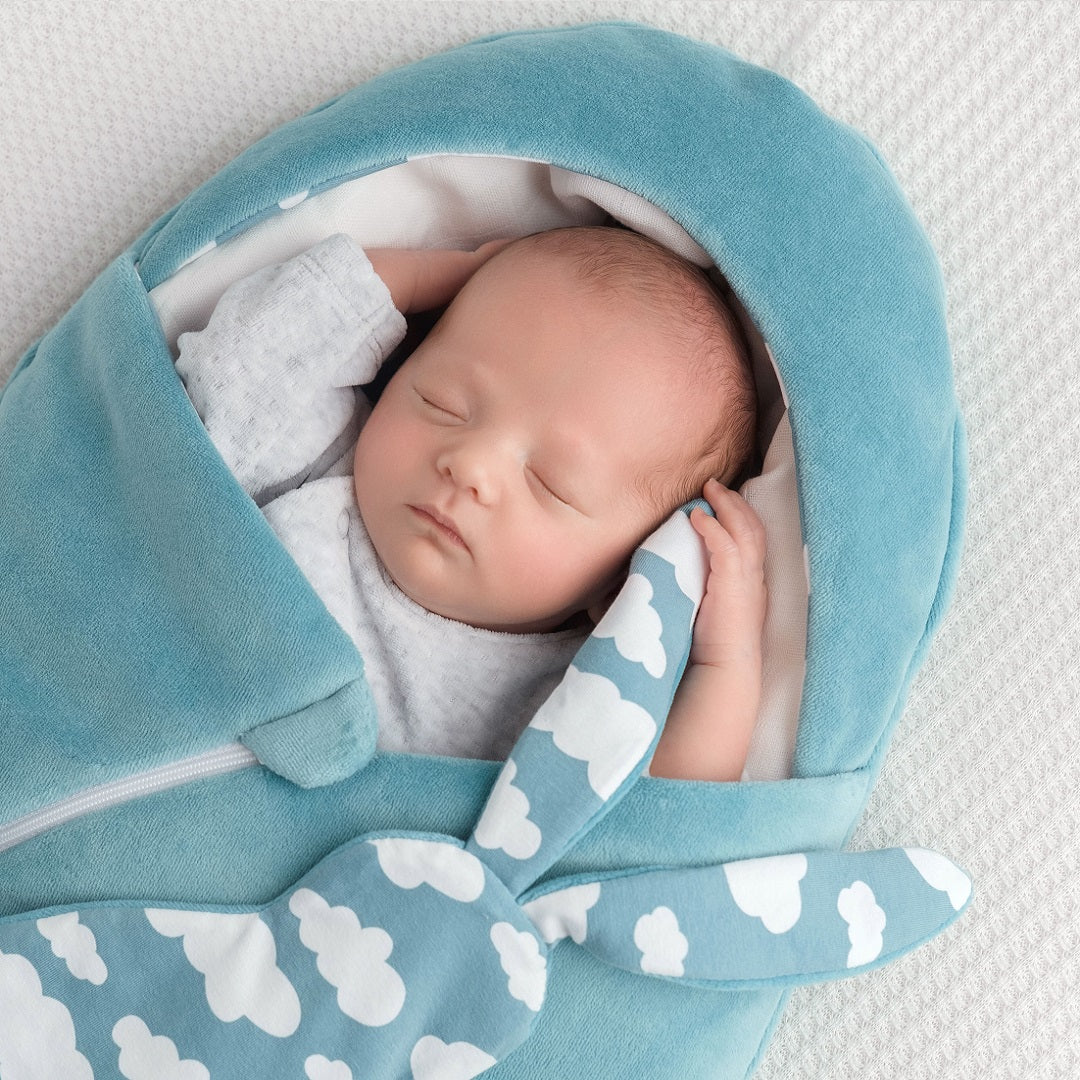Getting a child to sleep isn't always the easiest thing for parents, whether they are young or experienced. Each child is different: there are the heavy sleepers, who fall asleep in your arms as soon as they've finished their meal, and the light sleepers, who need to be rocked and calmed before they can be put to sleep. It's impossible to talk about standards when it comes to sleep, yet there are good practices that can be used on a very large number of babies.
At Ouatine & Cumulus, the sleep of the youngest is our priority, because after all, a baby whose rest needs are respected is a baby whose development will be optimal!
Tip #1: Place your baby on their back.
By placing your newborn on their back, whether for naps or nighttime sleep, you ensure they are in the safest position . Before six months old, your child is unable to roll over or change position, so healthcare professionals recommend placing them on their back to avoid any risk of choking or suffocation. However, this position does not allow your baby to self-soothe, hence the benefit of using a cocoon (and later, a sleeping bag) to allow them to calm down alone. Lying on their back is a position that significantly reduces the risk of sudden infant death syndrome (SIDS).
>> Discover our Cocoon Size 1 (0 to 6 months)
Before six months old, it will sometimes happen that your child manages to turn onto their stomach during the night; in this case, it is advisable to turn them back over to reposition them on their back. Later, when they start to move on their own by developing their muscles, they will be able to resume the correct position themselves, and you won't need to worry anymore.
Tip #2: Don't forbid yourself from giving your baby a pacifier if they need it.
A pacifier is a reassuring accessory for young children; it helps them fall asleep and reduces the risk of sudden infant death syndrome. Sucking , whether on a pacifier or on the mother's breast, releases endorphins, the hormone of well-being .
Using a pacifier with young children teaches them self -soothing , which will help them regulate their emotions on their own and therefore calm their crying, even in the middle of the night. Finally, the pacifier is a good pain reliever, since by sucking, the baby will calm down and manage to reduce the pain (especially when the first teeth appear).
The pacifier therefore plays several roles in the development of the newborn, but not only that. Indeed, an American study has shown that it reduces the risk of sudden infant death by 92% . A baby who sleeps with their mouth slightly open while sucking allows for greater ventilation and reduces the risk of reflux.
However, be careful, as it is advisable to introduce a pacifier to babies only a few weeks after their birth, so as not to disrupt their learning to suckle at their mother's breast. We also know the difficulties parents encounter when weaning their child off the pacifier once they grow up, so it should only be used when the baby really needs it.
Tip #3: Sleep in the same room as your baby until they are 6 months old.
When very young, babies need reassurance, just like their parents! Sleeping in the same room, preferably each in their own bed (avoiding co-sleeping and opting for co-bedding), increases your ability to monitor your little one during sleep. It's also a good way to take care of them quickly in case of nighttime breastfeeding.
Sleeping near your child can reduce their anxiety and also help create a stronger bond between the newborn and you. Just like a pacifier, sleeping in the same room as your child reduces the risk of sudden infant death syndrome by increasing their sense of security.
Tip #4: Use a cocoon or sleeping bag that's suitable for your baby.
For 100% safe sleep , it's essential that the baby feels comfortable in their environment: the cocoon is the ideal solution for this! From birth, creating a bedtime routine helps to accustom the baby to falling asleep and waking up in bedding that is suitable for them.
The cocoons from Ouatine & Cumulus have been designed to meet the needs of children according to their age. Made by Stéphanie, herself a mother and pediatric nurse, the cocoons are padded spaces allowing newborns to self-soothe by placing their hands near their face, in a flexed position , which will remind them of their time in their mother's womb.
The space enclosed by the cocoon around the baby will allow it to maintain a slightly flexed position , as in the womb, an ideal position for its development, which will help it to have peaceful and secure sleep.
>> Discover our Cocoon Size 1 (0 to 6 months)
>> Discover our Cocoon Size 2 (from 6 months)
